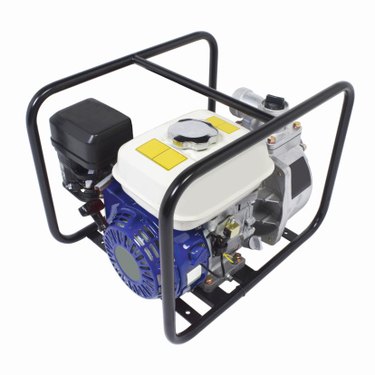
According to the U.S. Consumer Product Safety Commission, weather-proofing portable generators is a good idea because "portable gas-fueled engine generators are not constructed to permit their use outdoors during inclement weather." The commission recommends using a canopy if you must operate your generator in the rain. The main requirement is that you have 3 or 4 feet of open space above and to the sides of the generator.
Step 1
Put your generator outside on a day when it's not raining. You need to become familiar with setting up your portable generator with a protective canopy so you can do so quickly in the case of sudden inclement weather. It's OK to walk around the generator while it's running; just make sure you don't block the exhaust.
Video of the Day
Step 2
Set up the pop-up canopy above the generator following instructions that come with the canopy. Because this is the instant set-up type of canopy, you don't need any tools, and you can set it up in a minute or two after you get the hang of it.
Step 3
Check the position of the generator under the canopy so that no rain falls on the vent of the electrical coil system and the exhaust from the generator exits freely.
Step 4
Practice the process several times until you are able to set up the canopy around the generator quickly and easily.
Tip
If you shop around for the canopy, you can find one with a frame that's compact enough that when it folds down it will fit in the trunk of your car.
Warning
Keep an eye on you canopy in inclement weather. If the wind is threatening to blow it over, use tie-down ropes and stakes to anchor it.
Always make sure that your generator is on a dry surface, and that no water puddles around it or drains under it.
If you hands get wet, dry them off before touching your generator.
Video of the Day